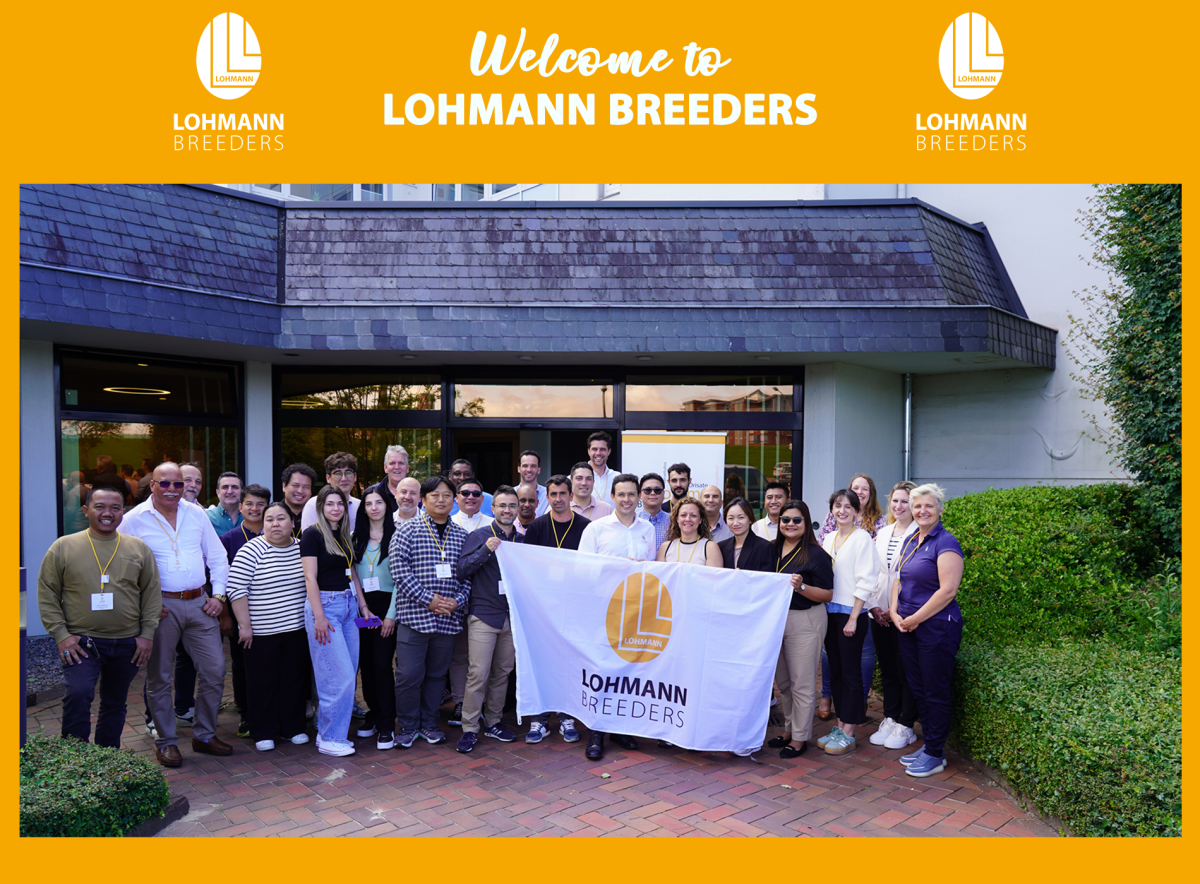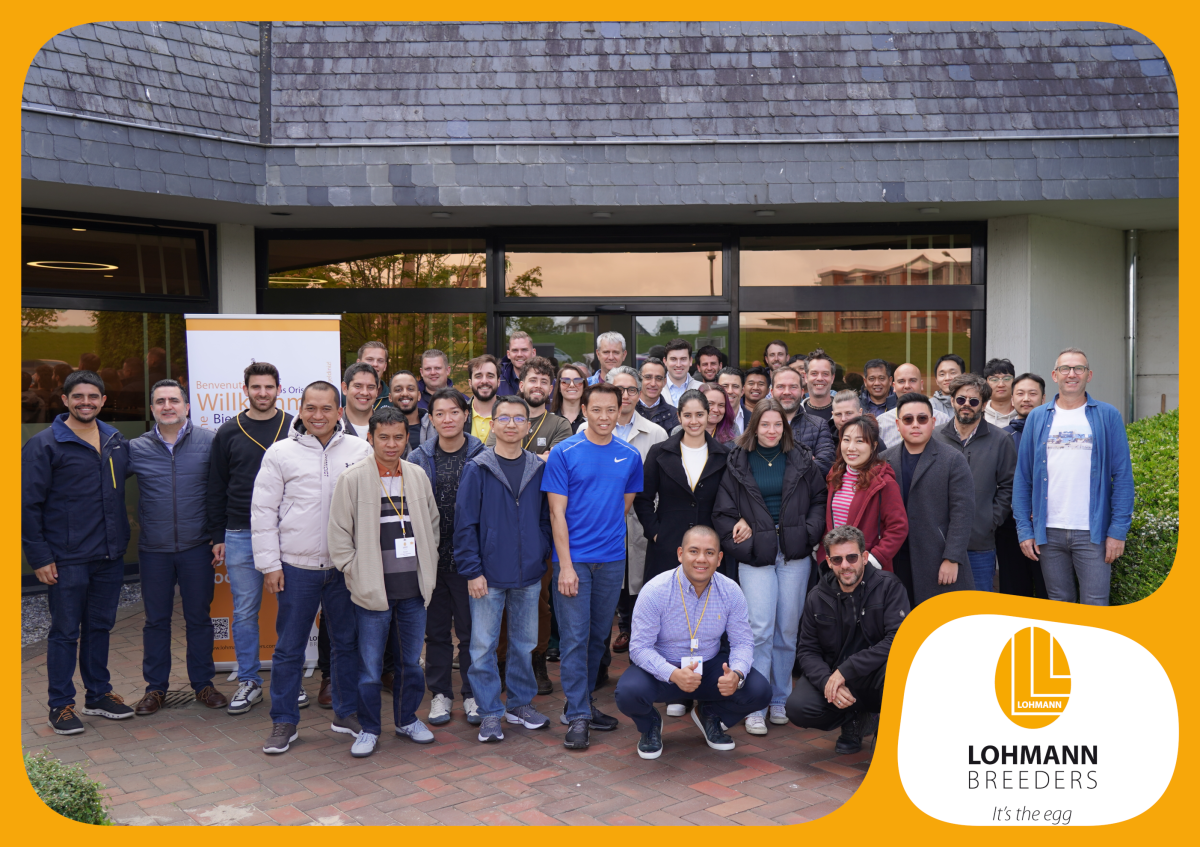Salmonella is a widespread problem in poultry farming worldwide. In addition to primary pathogenic salmonella, which can cause high losses in various poultry species, salmonella play a particularly important role as a zoonotic agent, i.e. a disease that can be transmitted from animals to humans.
According to the latest EFSA report, salmonellosis is the number two bacterial zoonosis in Europe (Zoonoses Report 2018)
Therefore, the poultry industry has a special responsibility to prevent the introduction of salmonella into the flocks and thus minimise the risk of transmission to humans.

Salmonella are rod-shaped bacteria from the Enterobacteriaceae family that can cause febrile gastrointestinal infections in humans and animals, among other things. Only two species exist, which are divided into over 2,600 salmonella serovars.
Salmonella bongori is mainly found in reptiles.
In warm-blooded animals, such as mammals and birds, Salmonella enterica is primarily found. Eight subspecies are distinguished, whereby almost all infections in birds and mammals are caused by the subspecies Salmonella enterica subsp. enterica.
In the case of salmonellosis in poultry, a distinction is made between infections with host-specific salmonella serovars and non-host-specific salmonella serovars.
While the host-specific serovars S. Gallinarum Biovar Pullorum (Pullorum disease) and S. Gallinarum Biovar Gallinarum (Fowl typhoid) can lead to severe clinical symptoms and sometimes high losses in chickens, non-host-specific salmonella serovars are primarily of great food hygiene and economic importance as causative agents of zoonoses.
These include S. Enteritidis, S. Typhimurium, S. Virchow, S. Hadar and S. Infantis. These only rarely cause clinical illness in poultry, but trigger the majority of salmonelloses in humans.
(Source: Zoonoses Report 2018, https://www.efsa.europa.eu/en/efsajournal/pub/5926)

The clinical expression of salmonellosis in poultry depends on:
- The serovar
- The host specificity
- The age of the infected birds
The above-mentioned non-host-specific salmonella serovars very rarely cause clinical symptoms such as diarrhoea or reduced performance in adult chickens.
In very young chicks, however, high losses and a chronic disease with joint swelling and respiratory problems may occur. Pathological examination may reveal inflammatory alterations of the navel, heart, appendix and liver.
In addition, animals that survive such an early infection are considered lifelong salmonella shedders.

Salmonella Pullorum can already be transmitted vertically, i.e. from infected parents to hatching eggs. Massive hatching loss and weak chicks are the result.
- After early infection, the chicks often show chalky white diarrhea (“bacillary white diarrhoea”) and a high mortality of over 50 % (pullorum disease).
- Surviving chicks show stunted growth, lameness due to joint inflammation and poorly developed plumage.
- The necropsy shows persistent yolk sacs, swelling of the liver and spleen, inflammation of the appendix and whitish nodules in the heart, liver, pancreas and lungs (“pullorum nodules”).
Older animals may be latently infected with S. Pullorum and show hardly any clinical symptoms. However, performance is impaired, the follicles degenerate and are grey-green in colour and stalked.
Depending on flock management, age and breed, losses of up to 100% may occur (see Table 2). White hybrid lines are less affected than brown lines.

- Bacteriology: direct detection is possible by cultivation on suitable culture media with subsequent identification of the pathogen.
- Molecular biology: salmonella-specific DNA can be detected by PCR
- Commercial serovar-specific PCRs are available for the identification of the serovars S. Enteritidis and S. Typhimurium
Suitable samples for the direct detection of salmonella are:
- Swabs
- Faeces
- Dust
- Organ samples

- Since antibody detection can sometimes lead to cross-reactions between serovars, a positive result should only be interpreted in combination with direct detection if possible.
- Flocks vaccinated against salmonella can yield positive results in a serological screening.
Consequently, indirect detection via antibodies is only useful if the tested flock has not been vaccinated against the serovar to be tested.
Such screenings are therefore mainly carried out for S. Pullorum and S. Gallinarum. However, the results can be influenced in particular by the use of inactivated S. Enteritidis vaccines.

Parent animals can no longer be used for the production of chicks, eggs from laying hens may no longer be sold as grade A and the meat of salmonella-positive animals must be heat-treated after slaughter (national legislation must be considered!).
Herds infected with salmonella therefore continue to be a high risk of infection for humans, which means that such herds often have to be slaughtered prematurely.

Non-living vectors such as equipment, clothing, egg crates and bedding must also be critically considered.
The production process should guarantee freedom from salmonella and care should be taken during storage to ensure that rodents and insects cannot contribute to contamination.
Professional rodent and pest control can help minimise the risk.

Commercial live vaccines and inactivated vaccines are available. The basic vaccination of pullets is usually carried out by administering live attenuated vaccines twice or preferably three times via the drinking water.

Furthermore, it is possible to boost immunity with inactivated vaccines.
- In some countries, such as France, Denmark, Sweden or Norway, live salmonella vaccines are not licensed.
- In Germany and some other countries, vaccination against S. Gallinarum is prohibited.
It is recommended to regularly check one’s own farm for weak points and, if necessary, to involve external advice in order to avoid possible routine blindness.








 Veterinary
Veterinary 




